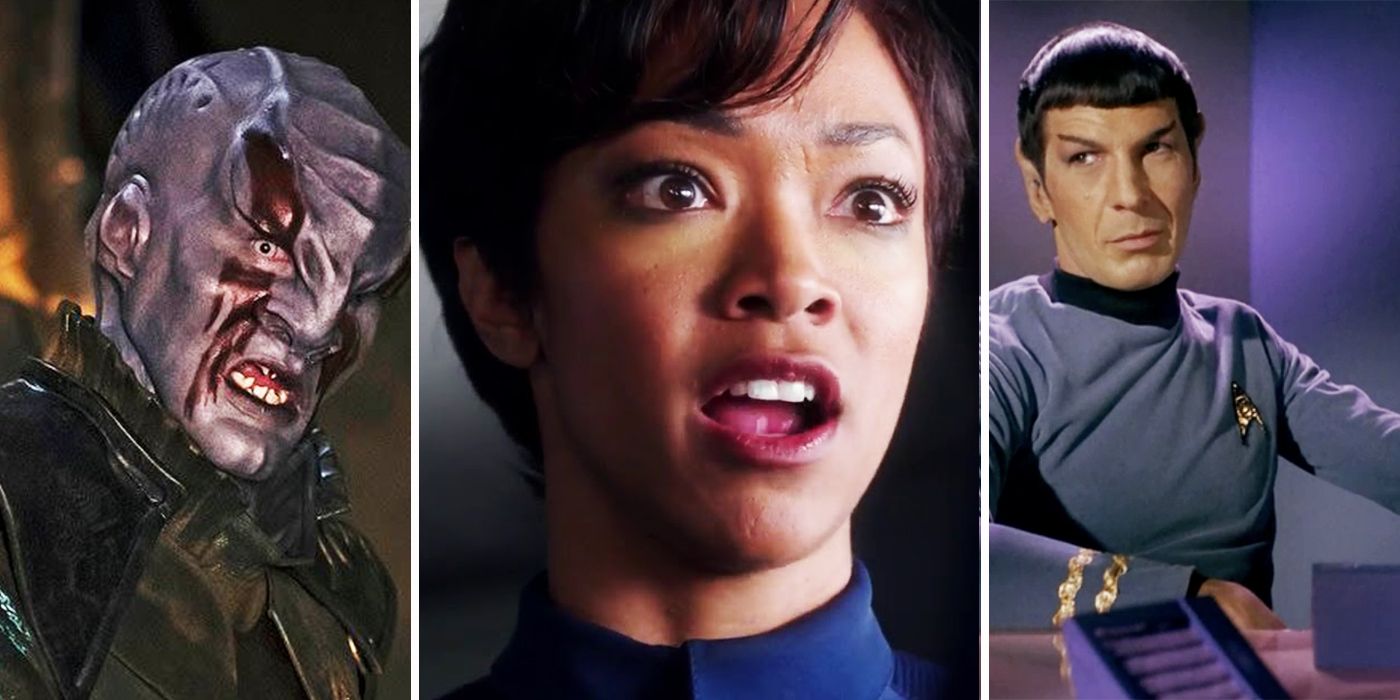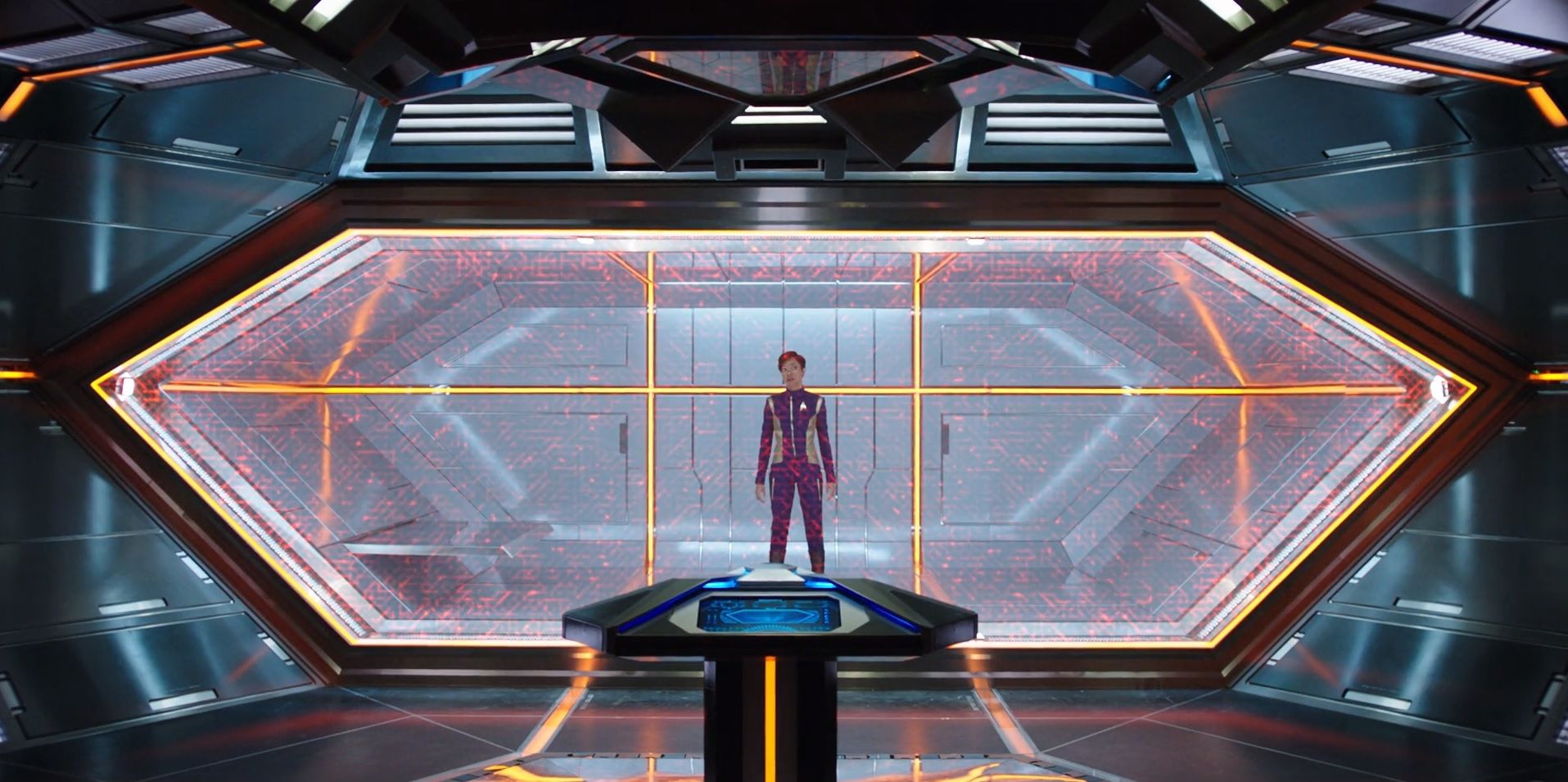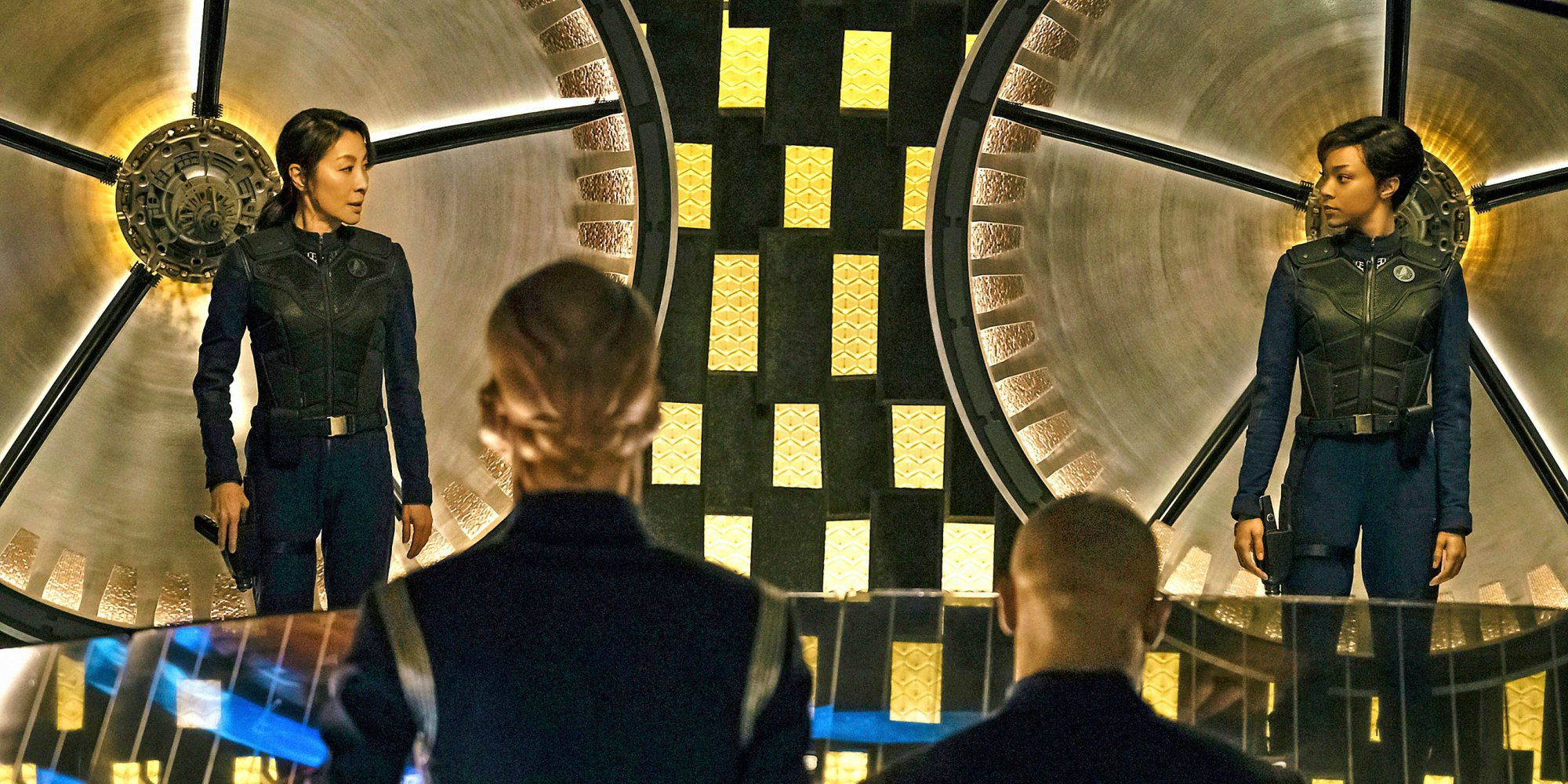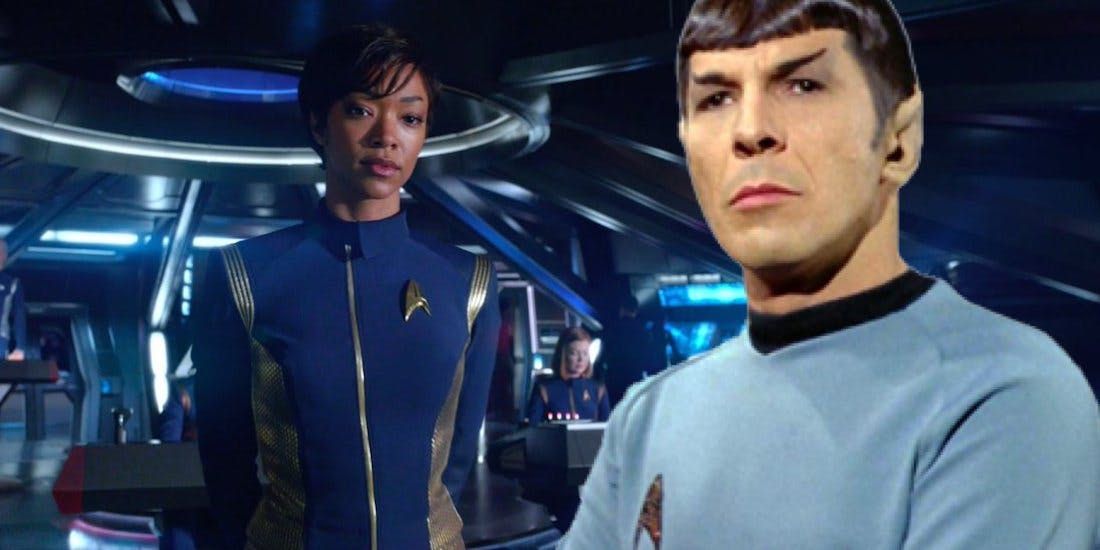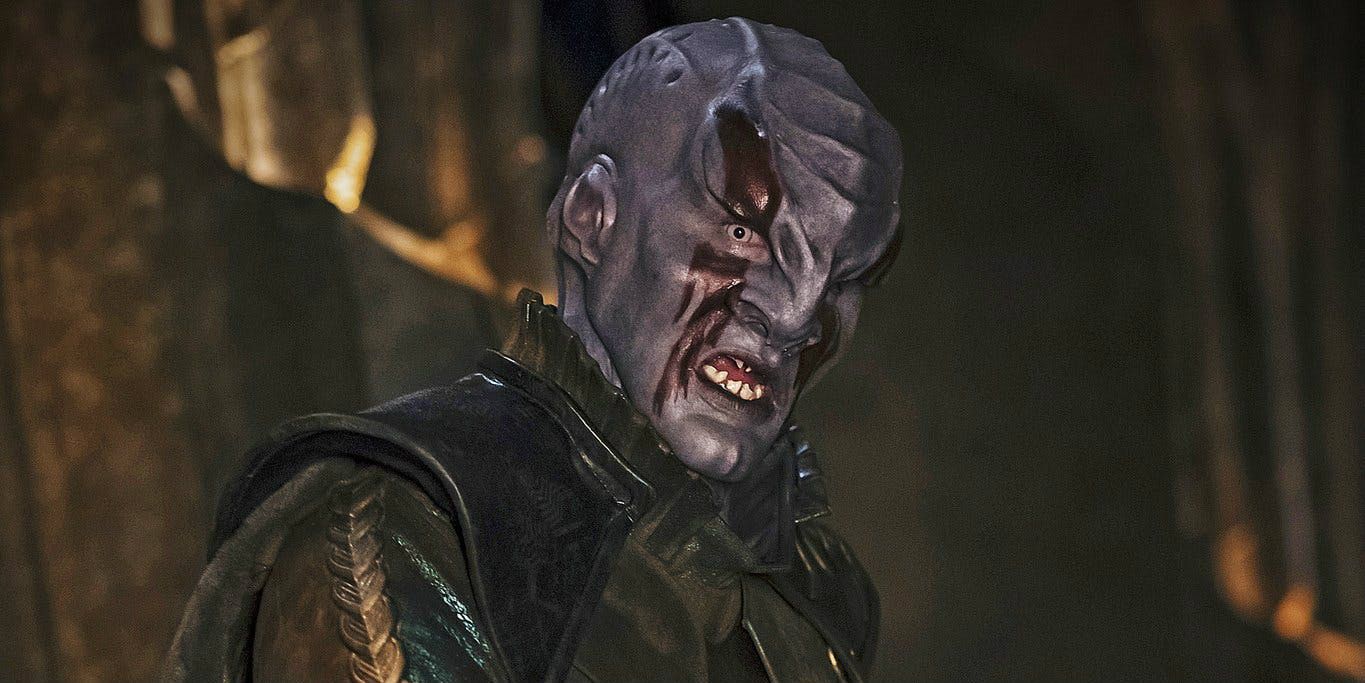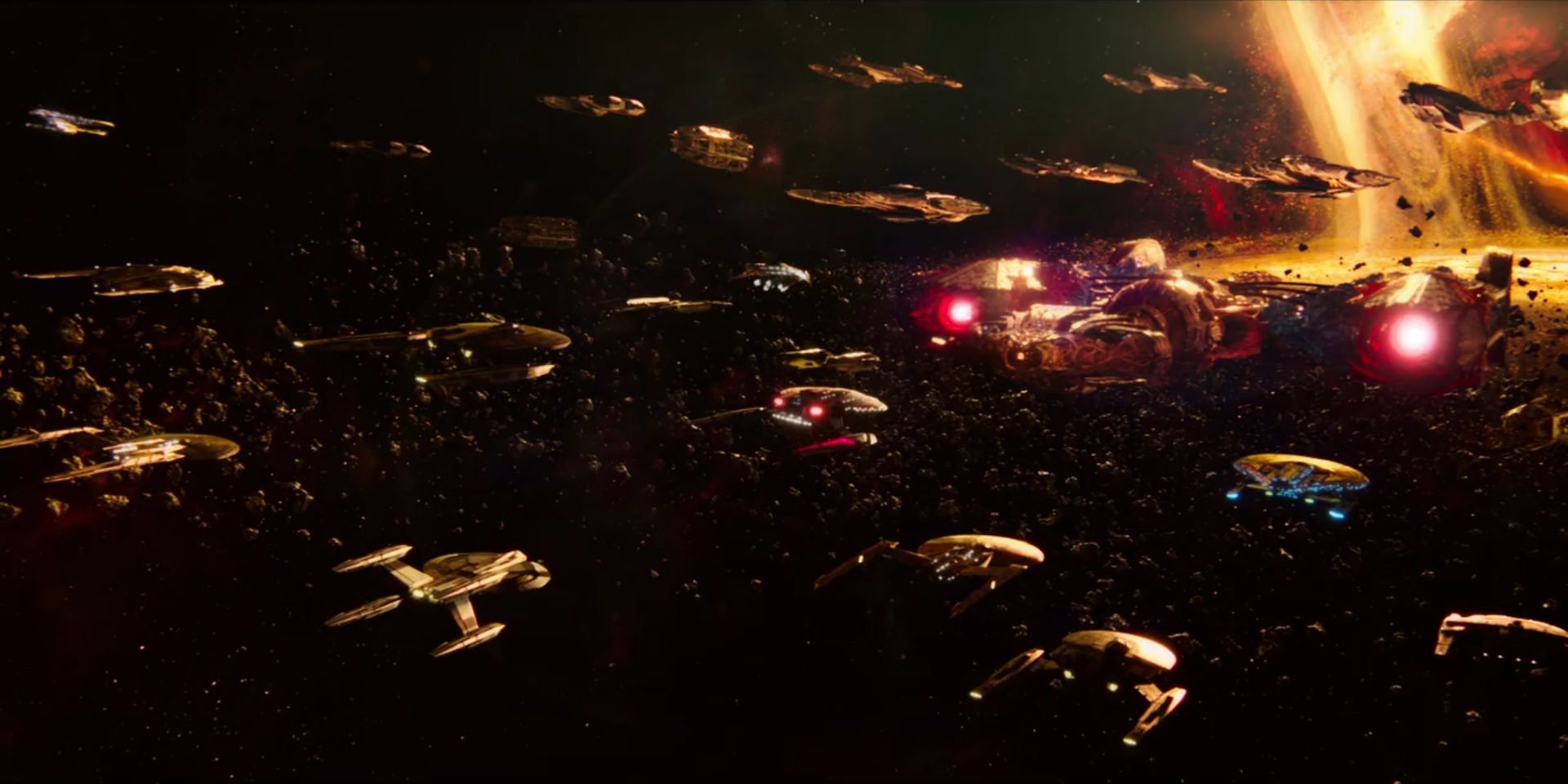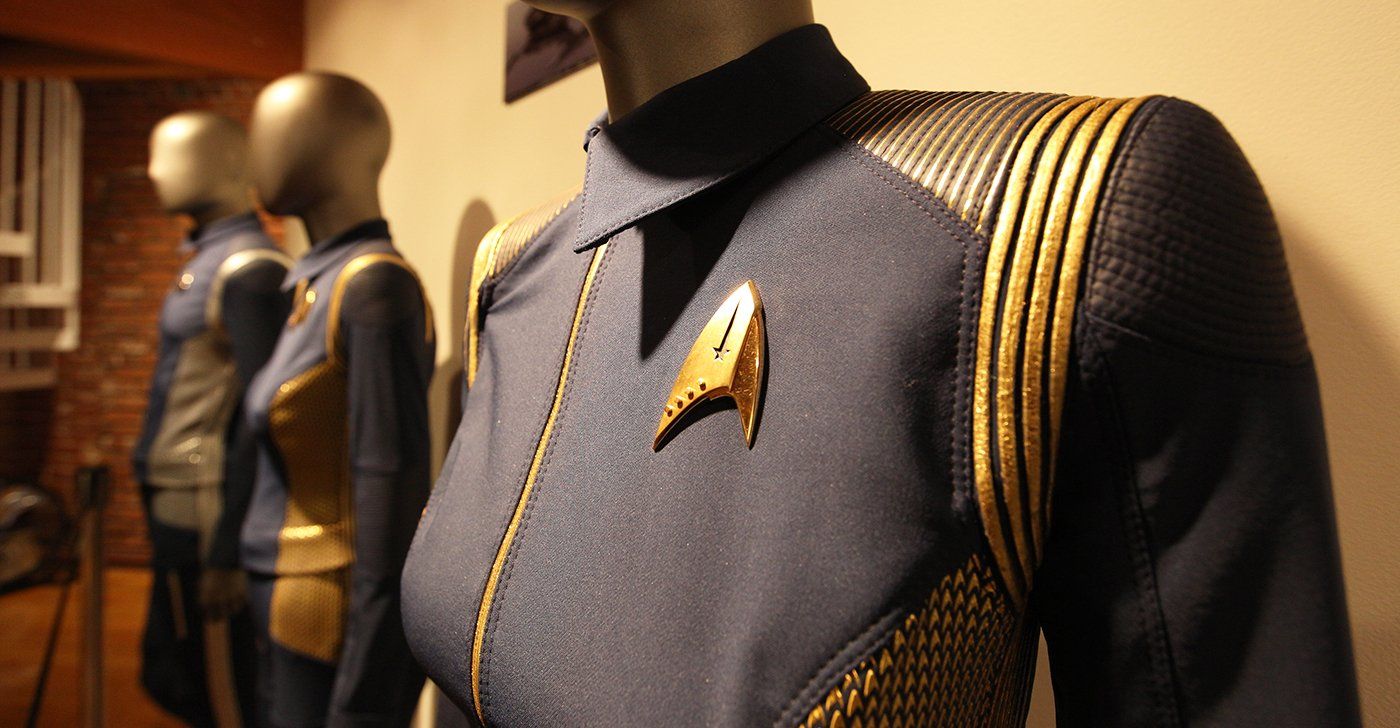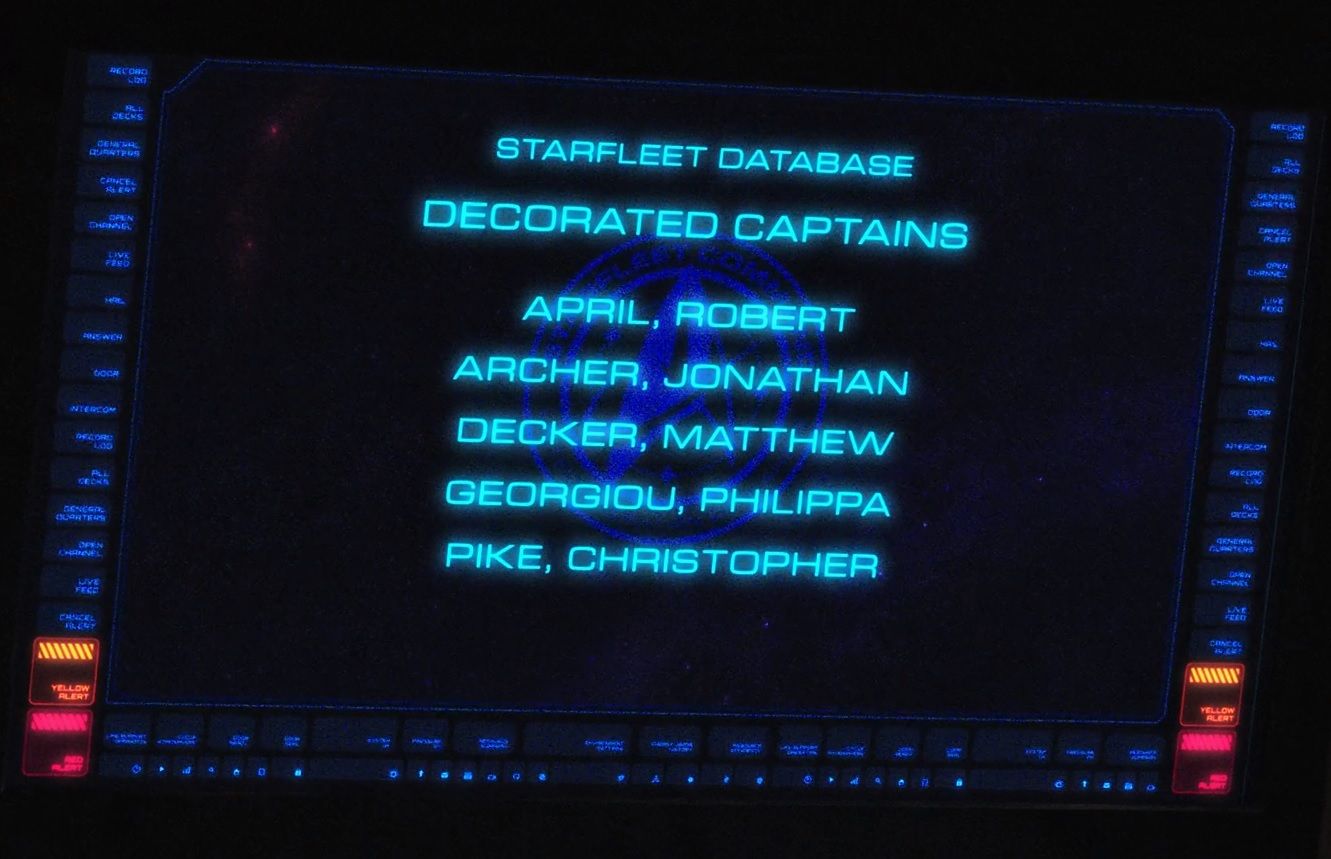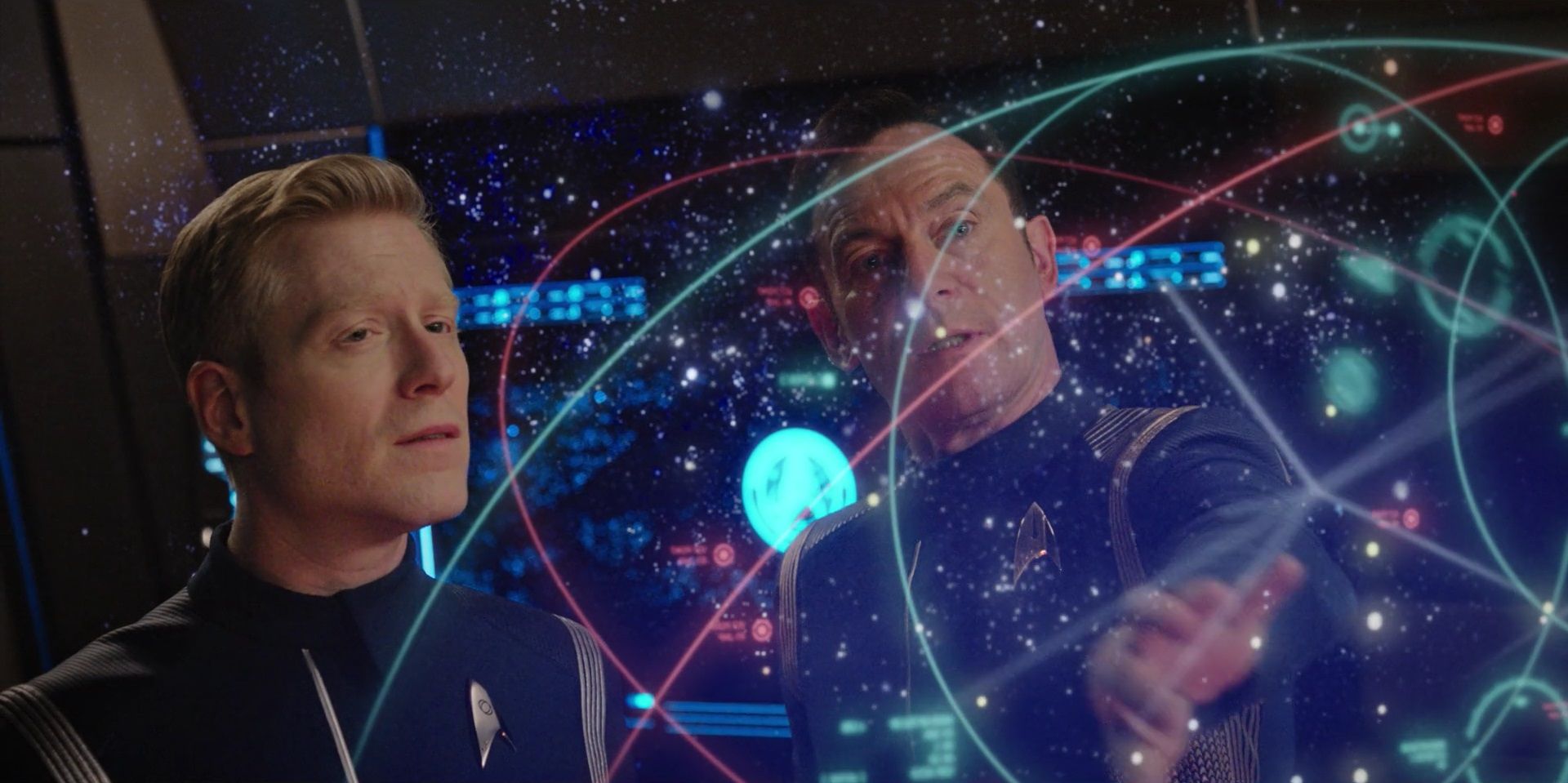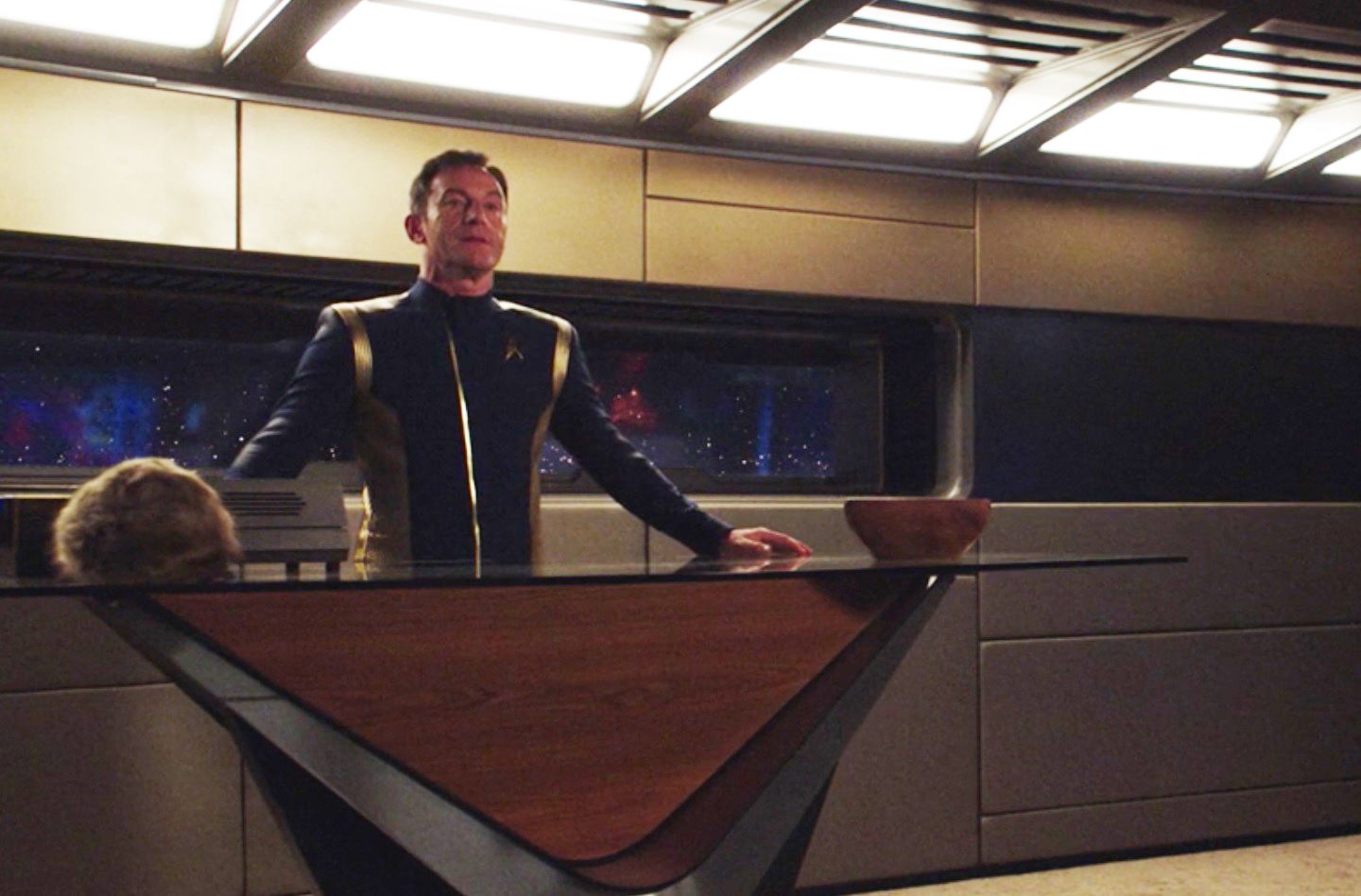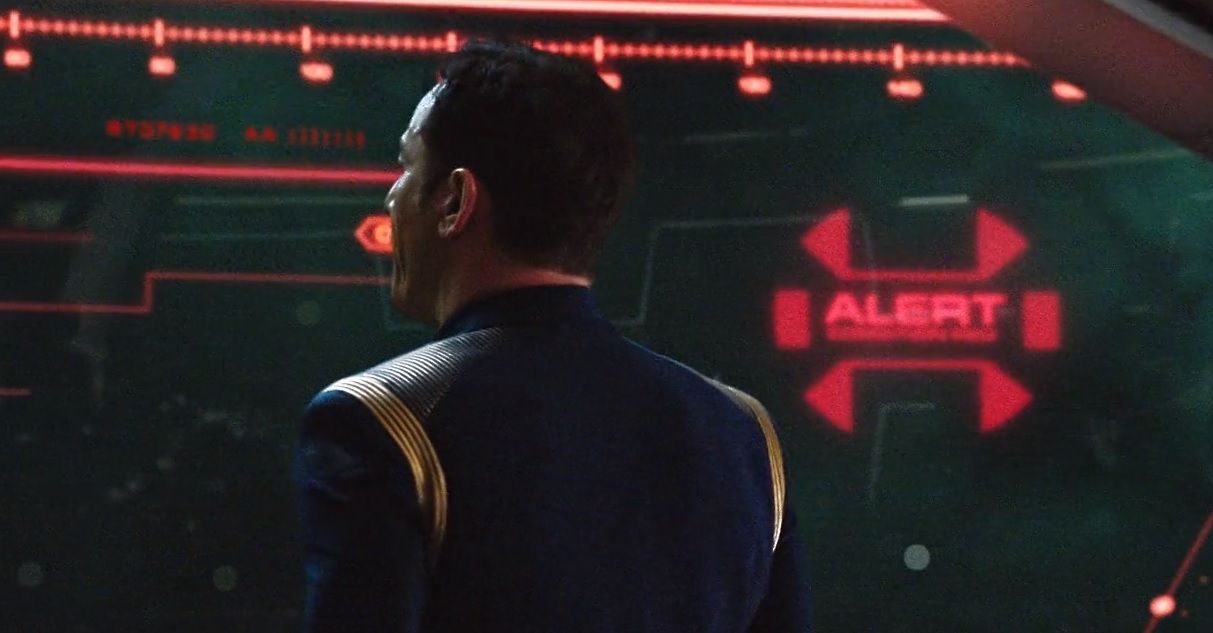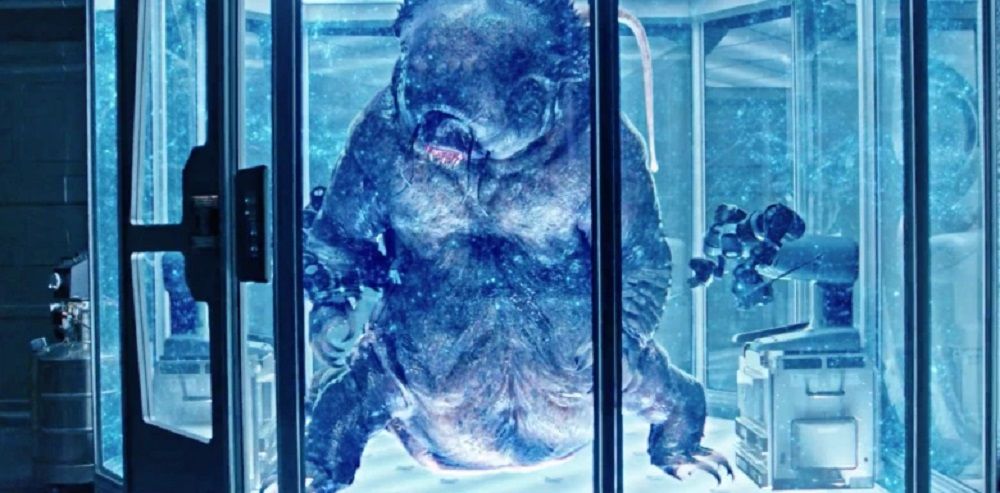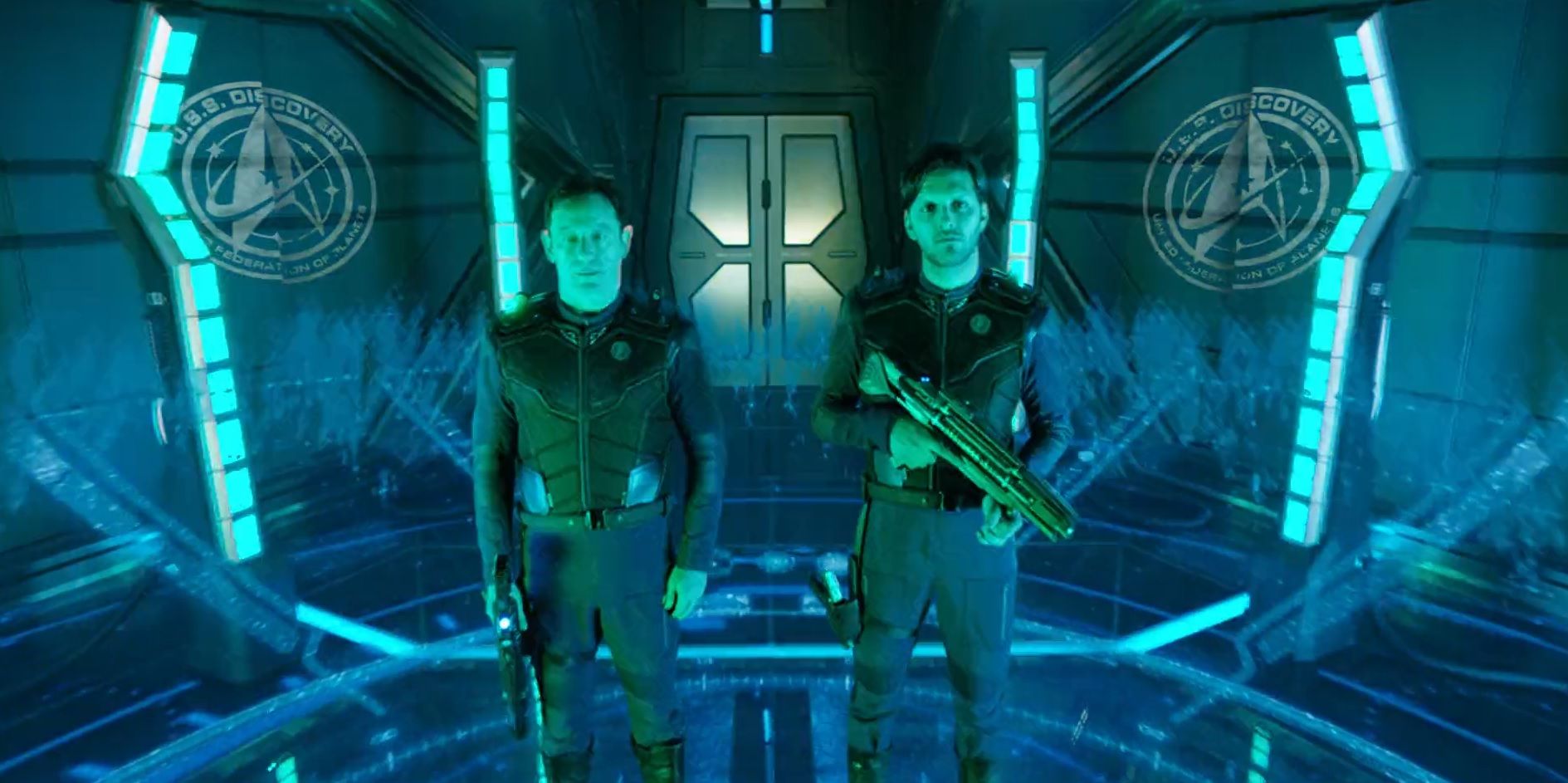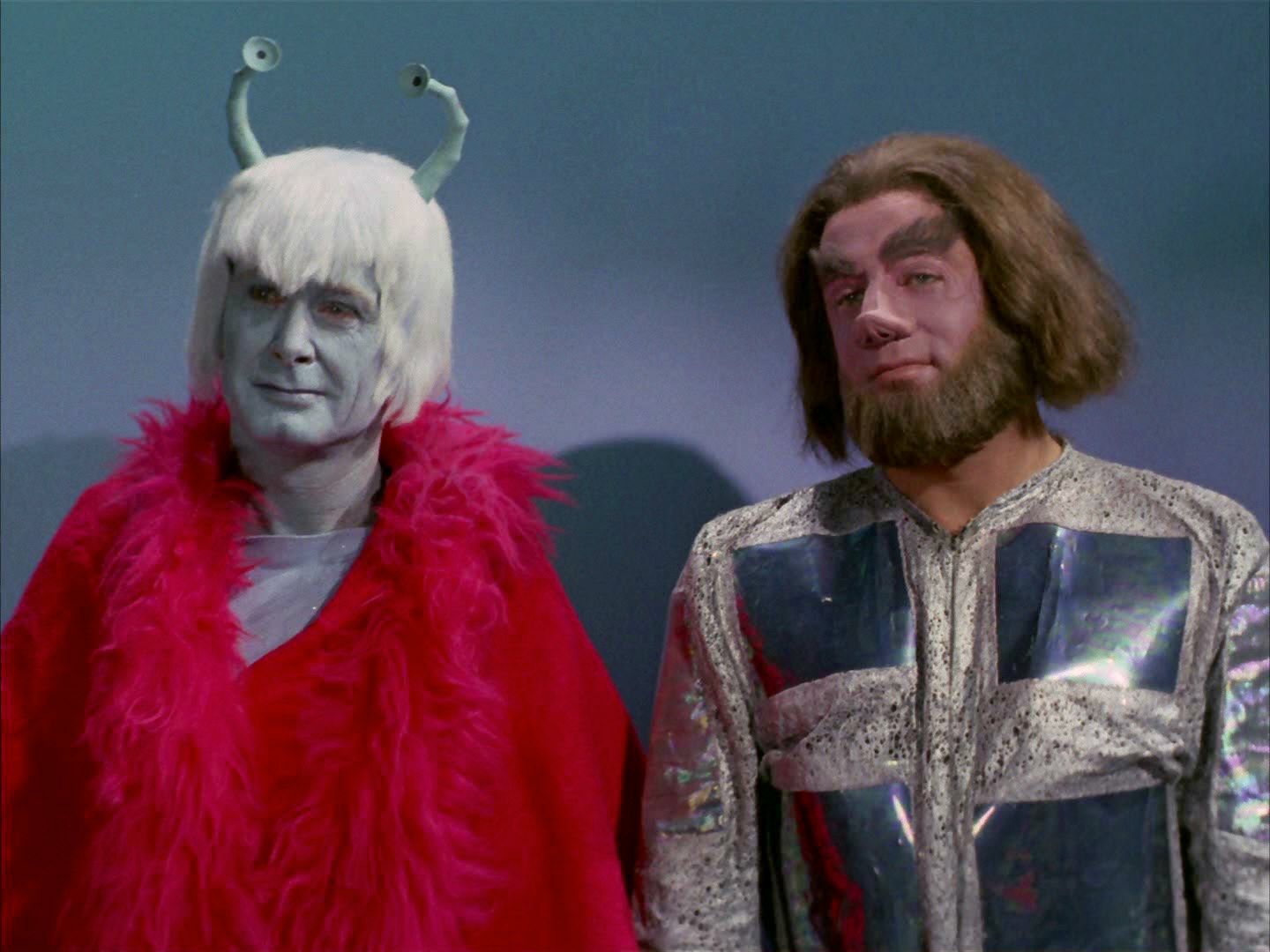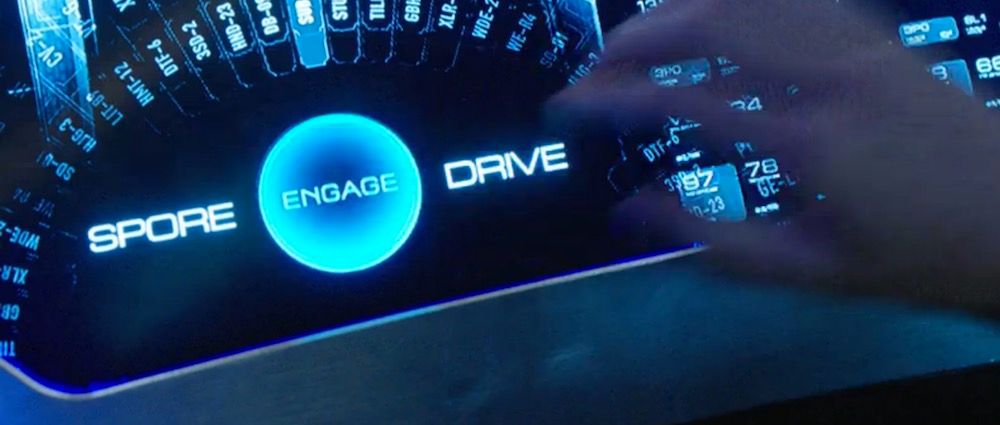The newest iteration of the Star Trek franchise, Star Trek: Discovery, has caused quite a firestorm among fans in its first season. While some viewers are enjoying the updated looks and darker tones that the show has been producing, other viewers are having difficulty accepting it into the existing canon of the franchise.
This is mostly due to the fact that the Discovery creative team has chosen to set the show in the year 2256. According to the Star Trek timeline, that puts the action 10 years before the time of Kirk and Spock seen in the original Star Trek series from the 1960s.
Obviously, The Original Series has an established aesthetic and mythology of its own. In the 50-plus years since, theStar Trek franchise has built upon this existing story line, often in painstaking detail. As a standalone show with modern-day special effects and technology extrapolated from today’s society, Star Trek: Discovery should easily have its own identity and opportunity to prove itself.
However, the show’s creative team has adamantly stated that the series is indeed set in The Original Series canon. Choosing to set the show at this very specific point in the in-universe mythos means that Discovery is essentially choosing to put itself at odds with what has come before it.
Here are the 15 Times Star Trek: Discovery Has Brazenly Broke Canon.
Mutiny on a Federation Starship
In The Original Series episode “The Tholian Web”, The USS Enterprise finds another Federation ship, the USS Defiant, adrift in space; the commanding officer is found dead, with another officer’s hands around his throat.
Chekov asks if there has ever been a record of a mutiny on a Federation starship, to which Spock replies “Absolutely no record of such an occurrence, Ensign.” However, the first episode of Star Trek: Discovery depicts the main character, Michael Burnham, performing a one-woman mutiny aboard the Federation starship on which she serves, the USS Shenzhou.
As the first season progresses, all Starfleet officers that Burnham meets are keenly aware of who she is and what she’s done, meaning that the incident clearly wasn’t buried or forgotten about in the next decade. This glaring canon omission is made all the more incredible by the previous point of Burnham being Spock’s adopted sister.
Site-to-Site Transporting
In The Original Series, Kirk states that site-to-site transports – the act of transporting an object or person from one site to another without the use of a transporter room – are rarely done. Kirk explains that they are incredibly difficult from a resource-management and mathematics standpoint.
Throughout the entire three-season run of The Original Series, the move is only performed once and it's during the second season. Fans didn’t see the maneuver again for 18 years, until Star Trek IV: The Voyage Home.Star Trek: Discovery, however, seems to show that site-to-site transports can be done routinely and whenever convenient.
In the third episode, “Context is for Kings”, Lorca casually performs a site-to-site transport for himself and Burnham and the next episode features two more. That’s more transports in a two-episode span of Discovery than in almost 20 years of classic Trek.
Spock Has a Human Sister
Discovery tells viewers that Michael Burnham, played by Sonequa Martin-Green, is the “adopted” sister of classic Star Trek character Spock. As the new show explains, Burnham was rescued from a Klingon attack on a research facility – an attack that took the lives of her parents. Sarek and Amanda, Spock’s parents, chose to raise Burnham as their daughter alongside Spock.
Throughout The Original Series and its subsequent six films, Spock’s family was featured in multiple story arcs, including most of the plot of Star Trek V: The Final Frontier. This story revolved around his half-brother, Sybok.
However, not once did Spock, Sarek, or Amanda mention Burnham – an omission made all the more strange since she also joined Starfleet and served on a starship.
New and Different Klingons
It’s no real secret that the Klingons in Star Trek: Discovery don’t look or act like the Klingons that audiences have been used to for over 50 years. To be fair, Klingons have changed fairly drastically through the franchise’s history. In The Original Series, they were nothing more than humanoids with slightly darker skin tones.
Throughout the Star Trek feature films and beyond, the Klingon mythos expanded to showcase them as fierce warriors of the galaxy, valuing honor, and sacrifice – and sporting some pronounced forehead ridges and long, lustrous hair to boot. Instead of embracing one of these existing designs, however, Discovery curiously chose to move the Klingons in a whole new direction.
The new series presents the aliens as having bulbous, boney, and bald skulls, as well as a penchant for lies, subterfuge, and trickery over more honorable approaches of direct combat. Previous iterations of the franchise tried to explain the variations in the Klingons' physical appearance, but Discovery seems to be disregarding this as well.
A Much Larger Fleet of Starships
One of the biggest visual changes that Star Trek: Discovery has made to the series is in the Starfleet’s vessels. In 10 episodes, we’ve prominently seen at least five different designs of varying types of starships being employed by Starfleet.
This is in fairly direct contrast to the logistics of Starfleet that were outlined in The Original Series. While there have always been space-faring vessels of many different shapes and sizes used by Starfleet and its parent organization, the United Federation of Planets, there were only 12 Constitution-class vessels that represented starships. The massive, largely self-reliant vessels were employed for deep-space operations and peacekeeping efforts.
Discovery has referenced the Constitution-class starship and has said that these vessels are in operation in Starfleet. There are characters who have even referenced them as “top of the line,” but we have yet to see one on-screen in anything other than a quick look at a computer-screen schematic.
Enterprise’s Insignia Now Belongs to the Entire Fleet
Star Trek: Discovery’s uniforms use the now-iconic A-shaped “starburst” badge on all the uniforms of Starfleet members. Indeed, Starfleet has long used a variation of the A-shaped design – but this actual insignia was specifically designated exclusively for use on the USS Enterprise during this time period.
The Original Series established that the 12 different starships all used varying insignias, to better help identify which officers were from specific ships; starbases and Earth-based personnel used different insignia patches as well. According to existing Star Trek canon, it wasn’t until 2270 – about 15 years after the events being shown on Discovery – that Starfleet adopted the Enterprise’s badge for a fleet-wide standard.
While the Star Trek films and future series have certainly presented a wide-ranging take on the visual aesthetic of Starfleet uniforms, this insignia on the Discovery uniforms is definitely out of sync with existing canon.
Captain Pike Is a Hero Too Early
In Star Trek: Discovery’s fifth episode, “Choose Your Pain”, Saru asks the computer to pull up a list of Starfleet’s most decorated captains, and among other Easter egg names on the list, Captain Christopher Pike is featured.
While it’s nice that Discovery wants to make connections to existing Trek canon, it’s a bit too early in his career for that. Pike only took command of the USS Enterprise around 2254, just two years before the events shown in the first season of Discovery.
While he’s obviously an excellent captain and has likely been earning accolades his entire career, a span of only a few years certainly doesn’t seem like enough time to land him on an “all-time greats of Starfleet” listing.
Klingons Have Cloaking Technology
In The Original Series, it was established that the Romulans were the first species to widely perfect the technology needed to cloak an entire starship. In classic episodes such as “The Enterprise Incident” and in the original movie series, it’s said time and again that the Klingons didn’t acquire cloaking technology until after the Romulans.
It’s often inferred that the two species formed a short-lived alliance that allowed for such technological access. According to canon, this interaction didn’t happen until 2269 -- which is 13 years after the events shown so far on Star Trek: Discovery.
Unfortunately for canon purists, Discovery has shown the Klingons to somehow already be in possession of the cloaking technology. This can be added to the multiple ways that the Klingons in Discovery are markedly different than the other Klingons of the franchise.
The Organians Are Already Present
The Organians are a powerful species that were first introduced in The Original Series. A group of non-corporeal beings, the Organian culture adhered to a long-standing rule of observing other species, but not interfering in their development.
However, this changed when the Organians were forced to intervene during a Klingon-Federation skirmish on their homeworld, as shown in the classic Original Series episode “Errand of Mercy”. This event took place in 2267, and was the first time the Organians allowed themselves to be known to other species.
In the Discovery episode “Magic to Make the Sanest Man Go Mad”, Lorca states that Organia had been conquered by the Klingons. Similarly in a later episode, he says that the USS Discovery was in “Organian space.”
Neither of these events should be possible in the Discovery time of 2256, as it is 12 years before The Original Series indicated that the Organians made themselves known to humans and the universe at large.
Tribbles Don’t Act Like Tribbles
Introduced in the well-known Original Series episode “The Trouble With Tribbles”, the titular galactic pets have become as famous as the Ewoks to sci-fi fans everywhere. Tribbles can emit a cooing sound that has a soothing effect on the human nervous system and they can reproduce at an alarming rate.
In Star Trek: Discovery, it’s shown that Lorca has a lone tribble on his desk in his Ready Room. The furry little creature has been on his desk for weeks, if not longer, and is incredibly near to a bowl of fortune cookies. However, the creature doesn’t seem to have reproduced once, which is directly at odds with their established behavior in the Star Trek universe.
Additionally, tribbles emit a high-pitched squeal when Klingons are near to them. Surely Lt. Tyler, who has now been confirmed as an undercover Klingon, has been in Lorca’s Ready Room – has the tribble not squealed in Tyler’s presence?
The “Red Alert” Logo Is Decades Too Early
The ships of Starfleet, as shown in Star Trek: Discovery, still feature the established Yellow Alert and Red Alert in times of danger. The USS Discovery also added a “Black Alert” related to when the ship’s spore drive is activated. As shown in the new series, the Red Alert logo is one that is familiar to long-time Trek fans.
Unfortunately for the creative team, it appears they have introduced this variation of the visual alert too early. The USS Enterprise in The Original Series used nothing more than a flashing red bar to indicate Red Alert. The logo that Star Trek: Discovery utilizes wasn’t introduced until the events of Star Trek: The Motion Picture, which takes place about 15 years after the events of the new series.
Its inclusion in Discovery is likely due to the presence of long-time Trek veteran Nicholas Meyer as a writer/consulting producer on the show. Meyer directed the films Star Trek II and Star Trek VI and he wrote the screenplays for Star Trek IV and Star Trek VI, so clearly the original films hold a special place in his heart.
Genetic Manipulation Is No Longer Taboo
Human Genetic manipulation was outlawed in the Star Trek universe during the 1990s, when the Eugenics Wars took place on Earth. This has been the focus of several Star Trek episodes and films, including the well-known Original Series entry “Space Seed” and the film Star Trek II: The Wrath of Khan.
It’s well-established that Starfleet and the Federation frowns heavily on any use of eugenics or genetic manipulation. In Star Trek: Discovery, however, the practice appears to be fairly commonplace. Specifically, the spore-drive work aboard the USS Discovery seems Starfleet approved.
The process relies heavily on the genetic modification of a human “navigator” by mixing Tardigrade DNA into the navigator’s body. While Starfleet as shown in Discovery does seem desperate to make this technology work, it seems at odds with established canon that they would be willing to engage in genetic manipulation to make it happen.
Discovery Has a Holodeck
It’s no secret that the USS Discovery has a holodeck, a holographic environment simulator used commonly for entertainment and training purposes. In the episode “Lethe”, Lorca and Tyler are shown running a simulation where they train in combat against Klingons.
What’s problematic about this is that previous iterations of Star Trek have clearly stated that holodecks didn’t exist on Starfleet vessels prior to the late 24th Century – about 100 years after the events being shown in Star Trek: Discovery. Captain Janeway says so herself in the Star Trek: Voyager episode “Flashback”, and characters such as Commander Riker on Star Trek: The Next Generation seem amazed that the USS Enterprise-D features a holodeck.
While Star Trek: The Animated Series did feature the USS Enterprise having a “Recreation Room” in 2270, which shares some traits with a holodeck, it’s still unclear whether the Star Trek mythos accepts this series as canon or not.
The Founding Alien Species Are Practically M.I.A.
Founded in 2161, the United Federation of Planets is the interstellar group of peace-minded planets and it is the group that employs Starfleet as its galactic military presence. Existing in Star Trek canon since The Original Series, the follow-up series Star Trek: Enterprise solidified the idea that there were four founding members of the Federation: humans, Vulcans, Andorians, and Tellarites.
The founding of the Federation occurred almost 100 years before the events being shown on Star Trek: Discovery – why, then, haven’t viewers seen a single Andorian or Tellarite featured in the "main universe" on the show? Both species have appeared on-screen in multiple other Star Trek series.
Discovery has mentioned the Andorian homeworld in a quick line of dialogue and briefly showed versions of both species in the episode featuring the "mirror universe," but as of yet, neither founding Federation members have appeared in person in the show's main universe.
The Mystery of the Spore Drive
As noted in an earlier entry, Star Trek: Discovery has multiple starships with “spore drive,” a displacement-activated propulsion system that utilizes an organic mycelial network that exists throughout the universe in a subspace mycelial plane.
By integrating tardigrade DNA into a human host, the USS Discovery was able to use this genetically-modified “navigator” to successfully traverse the mycelial network and enable the ship to move across great distances instantaneously.
It’s curious, then, that the spore drive has never been mentioned anywhere else in the 50-plus years of Star Trek, even as a failed experiment. It’s possible that the Discovery creative team may find a way to explain the lack of general knowledge in the Star Trek universe about the technology. However, it certainly seems like something that could have come up during the seven-season run of Star Trek: Voyager, the show that revolves around a Starfleet vessel stranded 70 years from Earth.
---
Did we miss any moments from Star Trek: Discovery that brazenly broke canon? Let us know in the comments!

